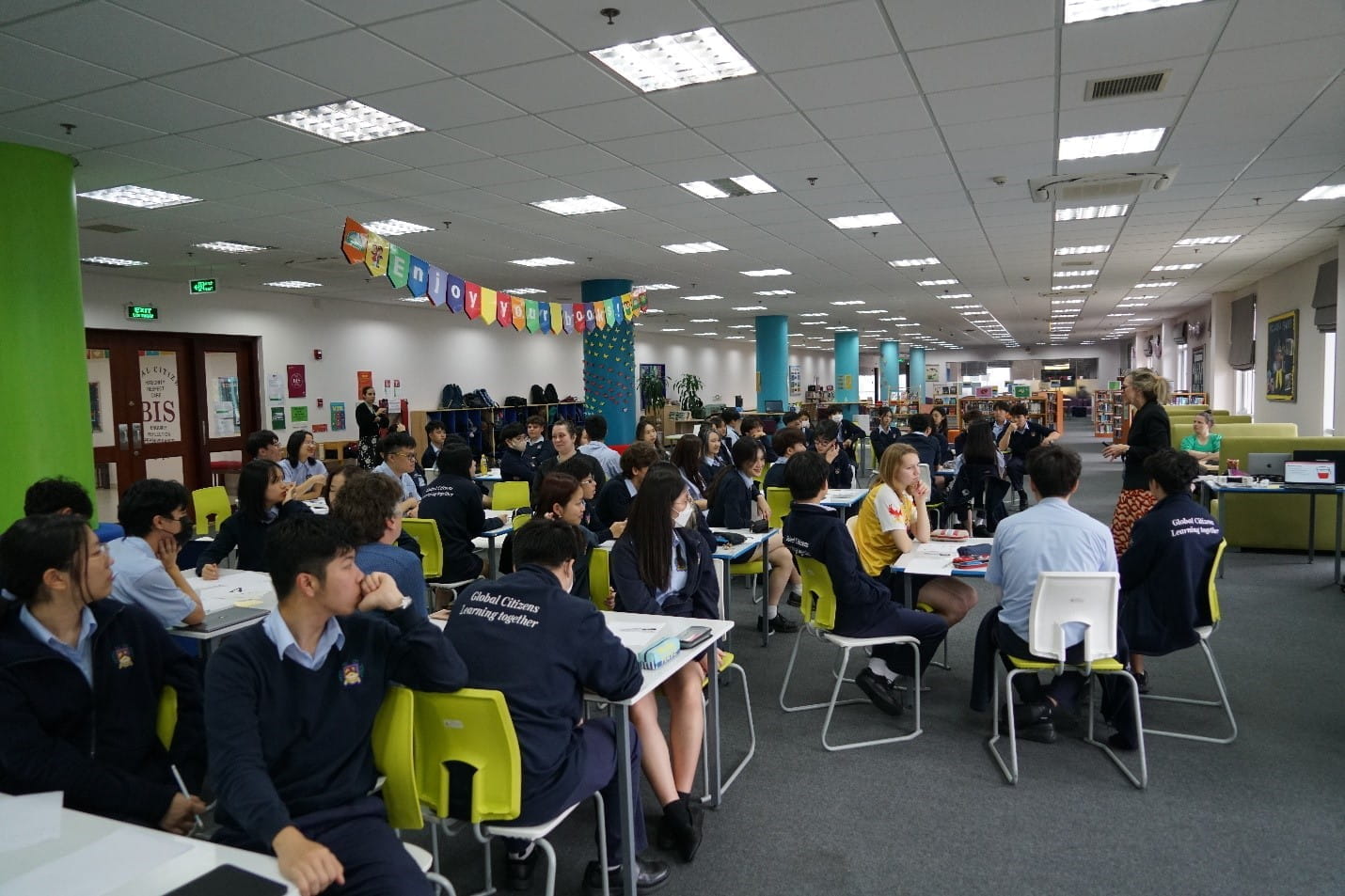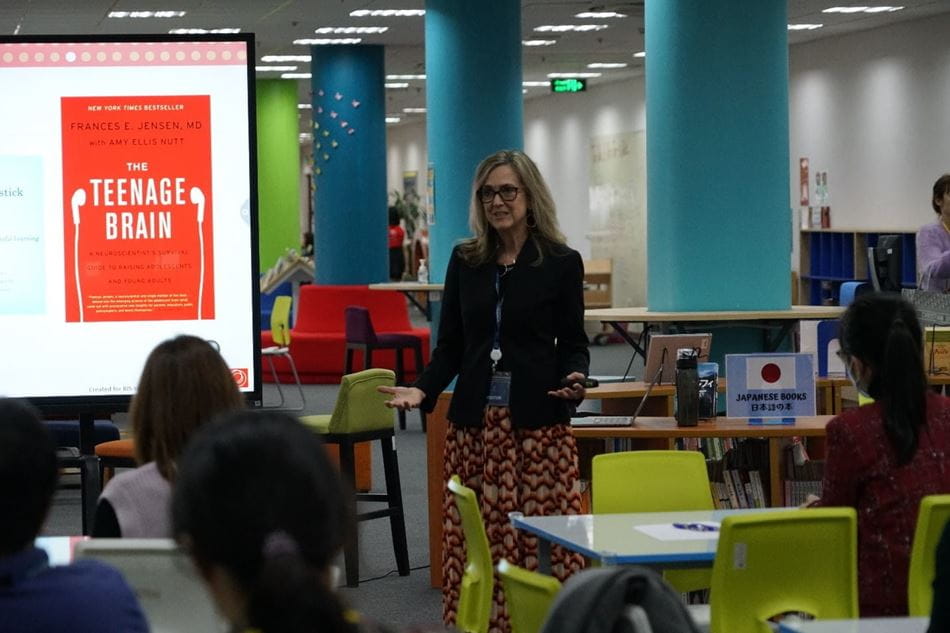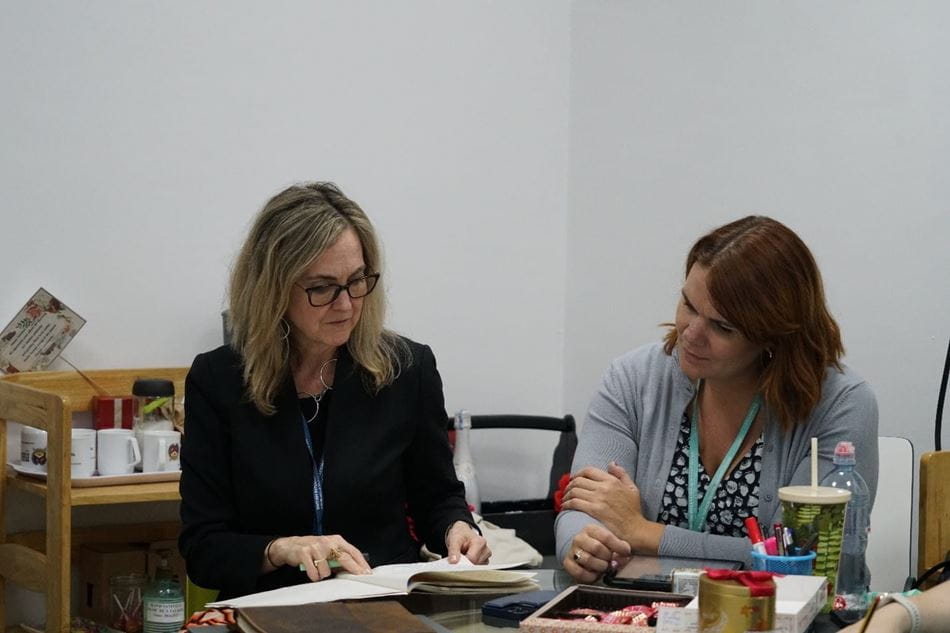We use cookies to improve your online experiences. To learn more and choose your cookies options, please refer to our cookie policy.

In order to maintain the highest possible teaching standards using the most up-to-date educational research, we called on the skills and knowledge of Tricia Taylor within the Secondary school at BIS Hanoi this year. Tricia, consultant and author, has been a teacher and leader in schools in the UK, USA and Spain for more than 25 years. Her work explores the science of learning, and the most effective strategies students can use to maximise their learning potential. She talks expertly around her three key concepts - Relationships, Memory and Mindset – and partners with schools to ensure that they are developing the most effective study habits and healthy mindsets within their students.
We have been working hard to embed many of the principles of her practice into our classrooms for some time. With her support this year, both virtually and during her in-person visit, we have been able to gain a deeper understanding of some additional strategies that will support students in our context even more.

Memory
One of the strategies that students in Secondary at BIS Hanoi understand is the need for ‘spaced practice’. Spaced practice is the opposite of ‘cramming’ or panic revising for a test. Rather than trying to learn everything the night before, in stressful conditions, students should be spreading out smaller revision episodes over a longer period of time. This is why it’s important for students to plan their revision several months in advance of any large examinations, to allow them enough time to revisit learning they find challenging several times.
 One approach we take with helping students to understand the importance of this is to understand the ‘forgetting curve’ (Ebbinghaus, 1885). The forgetting curve illustrates the decline of memory retention over time. The first curve (white) shows that on the first time of learning, nearly all information is forgotten, which would be lost entirely if not reviewed. However, when the learning is revisited, we retain larger amounts, slowly moving a greater amount of information into our long-term memory.
One approach we take with helping students to understand the importance of this is to understand the ‘forgetting curve’ (Ebbinghaus, 1885). The forgetting curve illustrates the decline of memory retention over time. The first curve (white) shows that on the first time of learning, nearly all information is forgotten, which would be lost entirely if not reviewed. However, when the learning is revisited, we retain larger amounts, slowly moving a greater amount of information into our long-term memory.
This supports our move in school away from relying heavily on formal summative assessments into lower stakes quizzes and activities regularly in all lessons. We are constantly capturing information about the progress of each student and how much of their learning they have retained and are able to remember. This approach ensures that students are much more confident to retrieve the information when they require it, such as in a formal examination setting.
Mindset
Another crucial area in ensuring maximum success for students in a classroom environment is helping them to develop a ‘learning mindset’. Tricia Taylor refers to mindsets as being ‘an approach to learning that recognises that getting better at something necessities perseverance, hard work and challenge as well as trying different strategies and asking for help’ (Taylor, 2019).

At BIS Hanoi we are making use of ‘effective effort’ in each classroom within our Secondary school, to support students with developing a ‘learning mindset’ and ensure that they have a clear understanding of how they learn best, also known as ‘metacognition’. Providing students with feedback on their academic outcomes alone does not encourage deep reflection around the skills they are developing as a learner, it’s important that as teachers and parents we also ‘praise the process’. By focusing on four key strands of effective effort; mistake-making, reflection, stretch zone and responding to feedback, we ensure we are helping students to understand exactly what makes them an effective learner and how they set about improving where necessary. You will see this clearly on our academic reports in the Secondary school and we encourage the same conversations to occur at home. In her parent workshop, Taylor spoke about the benefit of modelling this ‘process thinking’ out loud at home too. The more we are able to share our thinking with students and make it visible to them, the more it supports them with developing their own thinking.
Relationships
The final area of Tricia Taylor’s work and an area which we pride ourselves on at BIS Hanoi, is the development of effective classroom relationships. We know that in order for every student to achieve their full potential they need to feel comfortable and safe in a classroom environment. Effective learning is extremely challenging and building the optimum classroom culture is of upmost importance to us. Students need to be prepared to share their thinking, ask and answer questions and demonstrate confident communication. One area that teachers will be looking to develop in the coming months will be to encourage students to keep their hands down, or avoid calling answers out, so that they can focus on checking the understanding of all students using a range of different strategies. We will continue to ensure that the development of oracy is a focus for us and that students are sounding words clearly and are avoiding using ‘I don’t know’ as an answer.
As a school we feel extremely fortunate to be partnering with an expert who knows so much about the teenage brain. Whilst our academic outcomes indicate that our classroom practice is already in a strong position, we are always striving for better and we know focusing on the process of learning will support this. Keep an eye out for our Parent Connect sessions over the coming months which will provide an opportunity to share more strategies and explore the three key areas of Taylor’s work in a greater depth with parents.
References
Ebbinghaus, H. (1964). Memory: A contribution to experimental psychology. Dover.
Taylor, T, et al., (2019) Connect the Dots : The Collective Power of Relationships, Memory and Mindset in the Classroom. John Catt Educational Ltd.